- Botanical Description
- Chemical Composition
- Useful Properties
- Procurement of raw materials
- Ways of using
- Precautions
Schisandra Chinese is one of the species of the Lemongrass family, a perennial liana from the Lemonade family. The natural area of its distribution includes Japan, China, Korea, the Far East, Sakhalin. As a plant with decorative and medicinal properties, it is successfully grown in orchards, cottages and household plots, and also cultivated in industrial quantities in many countries. In eastern folk medicine, Schizandra has been used to treat various diseases since the days of Ancient China, and its popularity is second only to ginseng. It contains many vitamins and minerals, has a toning effect, restores strength, increases resistance to adverse effects, helps with pathologies of the respiratory, nervous and cardiovascular systems, is effective in the treatment of infectious diseases. The plant has received many national names, including the Manchurian Schisandra, the berry of five tastes, the lemongrass of the Far East, the Chinese schizandra, etc.
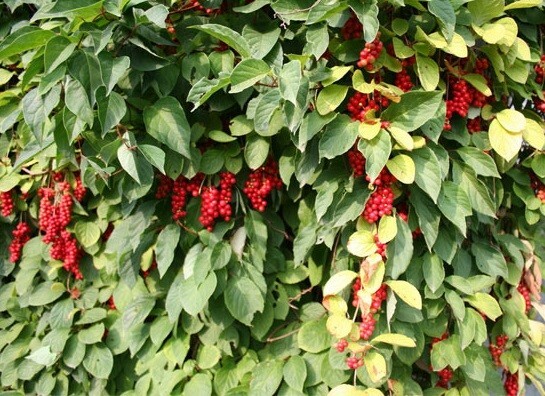
Botanical description
Schizandra is light-loving, grows well in forests, along river banks, on forest felling and fringes, along forest roads. The plant is frost-resistant, but it is quite demanding on moisture. It is poorly applied, both to excessive dryness and to abundant moistening, it prefers drained, organic soils rich in organic compounds. It reproduces mainly vegetatively, rhizomes and cuttings, it is also possible to multiply seeds.
The average length of the vine of Schizandra is 6 - 8 m, but it can reach 15 m, as it grows, it wraps nearby bushes and tree trunks, using them as a support. The rhizome is cordiform with numerous accessory roots. The stem is branched, up to 2 cm in diameter, on top is covered with bark, which in young plants is smooth, shiny and yellowish, and in old plants it is wrinkled, flaky and dark brown.
Interesting: Schizandra Chinese represents decorative value, especially in the period of flowering and the appearance of fruits. It is used for landscaping, decorating the walls of houses, arches and arbors. According to the nature of its growth, it is similar to a grapevine.
The leaf is regular, the leaves are weakly hamstrung, they leave from the pinkish-red petioles 2-3 cm in length. The leaf blade of 10 cm by 5 cm has an elliptical, pointed, upward form with a wedge-shaped base. On the upper side, the leaves are dark green in color, and on the lower side they are lighter, the edges are indistinctly jagged. The leaves of the plant and other parts of it during grinding give off a pronounced lemon flavor, which is due to the presence of essential oils in the composition.
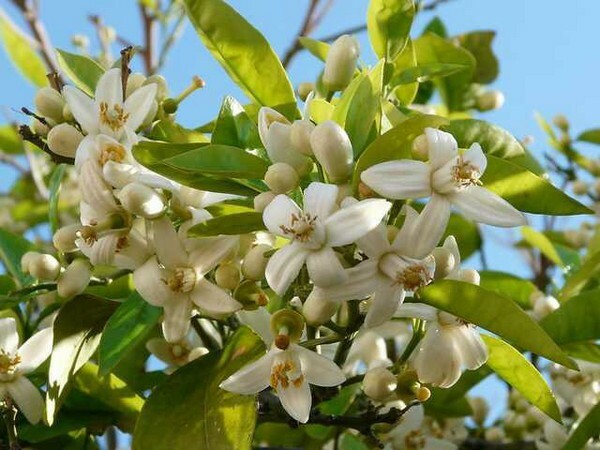
Plant monoecious. Blossoms Schizandra in May-June. The flowering period lasts 2 to 3 weeks, with male flowers blooming earlier than female flowers. Flowers are small on thin long drooping pedicels, white or pale pink with a pleasant fragrant aroma. Perianth is simple, 6 - 9-thinned, about 2 cm in diameter. In male flowers there are 5-7 fused together stamens in the column, and in female - numerous pistils located on an elongated peduncle.
Fruits begin to ripen in August. After the flowering of the plant, the flower-plant is strongly stretched, turning into a spiked brush( many-year old) up to 8 cm long, consisting of 20-50 juicy orange-red fruits of a globular shape up to 1 cm in diameter. Within each fruit there are two shiny,3 mm brown, yellowish or brown color. Fruits have a specific, spicy, sour, bitter taste and lemon scent.
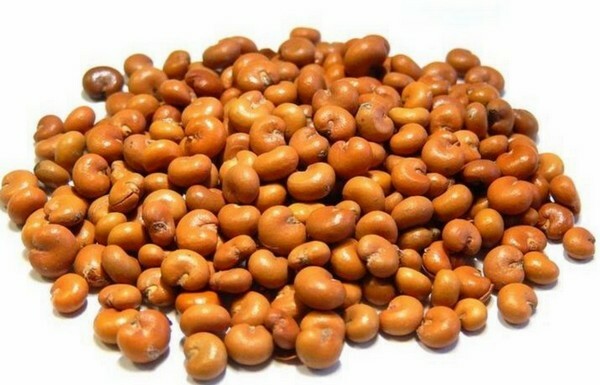
Chemical composition of
All parts of Chinese magnolia vine contain active substances, which causes high effectiveness of it as a medicinal plant. As a medicinal raw material, leaves, bark, seeds and fruits of the plant are used.
In the leaves, large quantities of important macro- and microelements were found. Among them are calcium, magnesium, potassium, copper, iron, zinc, iodine, nickel, etc. The plant fruits are rich in vitamins of group B, E and C, organic acids( apple, citric, tartaric), polysaccharides, minerals( Zn, Cu, Fe, Mn, Ni, P, K, S, Ti, etc.), tannins, flavonoids, saponins.
All parts of the plant contain essential oils of different composition. The highest is their number in the bark( up to 3.2%) and seeds( up to 2%) of the plant. The main components of the bark essential oil are sesquiterpenes, aldehydes and ketones.
Interesting: Essential oil of lemongrass, which has a pleasant gentle lemon scent, has found application in perfumery, soap making and cosmetology.
The seeds of the plant have resins, catechins, anthocyanins, tannins, essential and fatty oils, the latter amount reaches 33%.Fatty seed oil is a viscous liquid of golden yellow color, in chemical composition it is a mixture of glycerides of linoleic, oleic and other fatty acids. Most of the useful properties of magnolia seed is due to the presence in their composition of the compound schisandrine, which has a pronounced tonic effect on the body due to increased excitability of the central nervous system, stimulating effect on the heart and respiratory system.
Useful properties of
The main medicinal properties of magnolia vine are its adaptogenic, restorative and stimulating effect in case of mental fatigue, increased physical activity, intense exercise, nervous exhaustion, depression and asthenic syndrome. An important feature of the plant is that it does not cause overexcitement of the nervous system and sleep disturbances. Means prepared from Chinese magnolia vine have the following effect on the body:
- intensifies excitation in the cerebral cortex;
- stimulate the central nervous system and cardiovascular system;
- increase visual acuity, improve eye adaptation to darkness;
- reduce the concentration of glucose in the blood;
- have a vasodilating effect on peripheral vessels;
- show a pronounced bacteriostatic effect against Escherichia coli, pneumococcus and dysentery amoeba;
- increases concentration and activates mental activity;
- have choleretic effect, normalize the secretory activity of the stomach;
- increase resistance to adverse effects.
Schizandra berries are very useful. Their tincture is effective for the treatment and prevention of colds, flu and other acute respiratory diseases, it is used as a restorative in the recovery period after severe illnesses. Means from fruits and seeds of plants help to remove fatigue and increase vitality, give the person vigor and strength. Thanks to the high content of ascorbic acid, magnolia berries are effective as an antiscorbutic.
Interesting: Hunters in the Far East often took with them to hikes dried fruit of magnolia vine. This remedy increased their stamina, had a tonic and refreshing effect, and only one handful of berries allowed them to hunt throughout the day without eating.
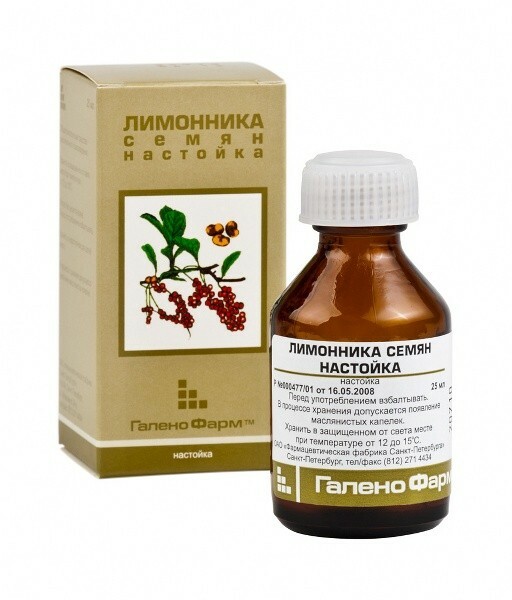
Means based on magnolia vine are used for hypotension, vegetovascular dystonia. They are effective in diseases of the respiratory system( pneumonia, tuberculosis, bronchial asthma, bronchitis), gastrointestinal tract( hypo- and hyperacid gastritis), liver, kidneys, anemia and other pathologies in which a general weakness and decline of strength is observed in a person. The plant is used in folk medicine in the treatment of mild diabetes. It improves the processes of cellular respiration, especially in the brain and spinal cord, liver and muscle tissue, activates the work of certain enzymes.
Chinese lemongrass is used for psoriasis, infectious and allergic skin diseases, long-term non-healing wounds and trophic ulcers.
Tincture of plant seeds is useful for improving working capacity, removing unpleasant symptoms of menopause, and premenstrual syndrome, with sexual weakness against the background of nervous system disorders, mental fatigue, as an auxiliary tool for maintaining strength and concentration in heavy physical and mental work.
Preparations of Chinese magnolia vine in the form of capsules with plant extract or spirit tincture of seeds can be purchased at the pharmacy.
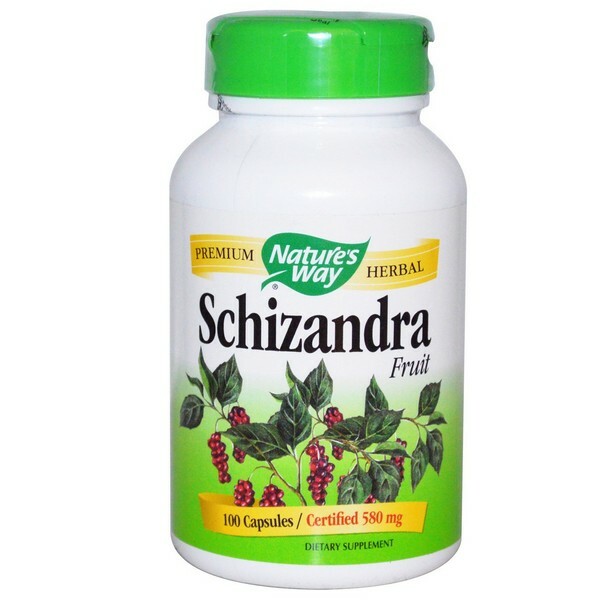
Schisandra Chinese has found application in cooking. From its berries prepare tonic and refreshing fruit drinks and compotes, as well as syrups, kissels, jams, jam, jam. Some confectionery factories use them as an additive to marmalade, chocolate and fillings to sweets. From berries squeeze out the juice and make wine. In dried form they are used as a seasoning for tea and alcohol tinctures. The leaves of the plant are sometimes added when pickling cucumbers, tomatoes and mushrooms.
Schisandra has beneficial properties for the skin. Its extracts are included in the composition of toning and moisturizing masks and creams for hands and face.
Procurement of raw materials
Preparation of Schizandra fruit is produced as they mature, beginning in September and until frost. For this, the brushes with berries are neatly cut with a knife, scissors or a pruner, they are folded into baskets, barrels or enameled utensils, trying not to crush. Then they are sorted out, separating the flower sprigs of twigs and other impurities. Drying is done outdoors under a canopy in the shade or in a special dryer. To store the dried fruit of magnolia vine is allowed for two years.
To get the seeds fresh berries knead, carefully squeeze out of them the juice, which is used for food, the remaining mass is washed with water to separate the seeds from the berry shells. Dry the seeds first in the air, then in dryers at a temperature of no higher than 60 ° C, and store in paper bags.
Warning: To collect lemongrass berries, galvanized buckets should not be taken, as contact with them will lead to their oxidation.
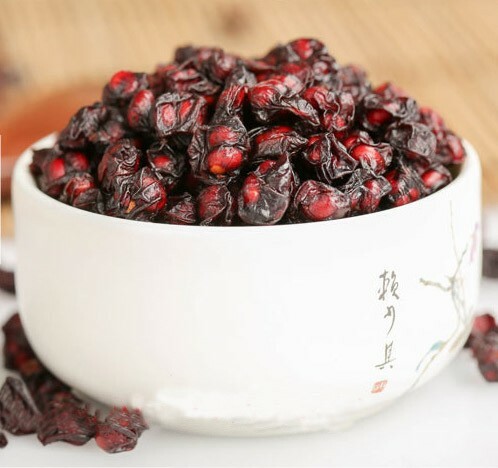
The leaves and shoots of the plant are harvested in August, cutting them with scissors. Then they cut into small pieces, lay out a thin layer on fabric or paper and dry under a canopy in the open air, periodically turning over.
Ways of using
From the leaves, seeds and fruits of Chinese magnolia vine in folk medicine, prepare alcoholic tinctures, water infusions, make tea. Considering the stimulating and tonic effect of the plant, the means from it are not recommended for taking in the evening.
Tincture of fruits
To obtain an alcohol tincture of lemongrass berries, they are mixed with 70% alcohol in a ratio of 1 to 5 in a tightly closed container of dark glass, that is, 20 ml of dried fruits are taken with 100 ml of alcohol. If necessary to get a larger volume of tincture, these quantities are proportionally increased. The mixture is insisted in a dark place for 10 days, filtered through gauze. The remaining berries are re-poured into 10 ml of alcohol, insisted for the same number of days as the first time, and filtered. The two tinctures obtained are combined and diluted 2-fold with distilled water. Eat 2.5 ml two or three times a day with dizziness, headaches, depression, asthenic syndrome.
Tea with lemon grass to strengthen the immunity
From the dried leaves, bark and young shoots of the plant, you can prepare a delicious aromatic tea that shows the useful properties of Schisandra. To brew 10 - 15 grams of herbal raw materials pour 1 liter of boiling water and insist 4 minutes. Such a drink with regular use will help to strengthen immunity and increase the body's resistance to infectious agents. Leaves of Schizandra are added in small amounts and when cooking ordinary black or green tea.
Tincture of seeds and berries
For preparation of tincture from seeds and berries of Lemongrass take 10 and 20 g of raw material, respectively, and pour it 100 ml of 70% alcohol in a container of dark glass. Insist the mixture for 10 days, then filter. Use 20-30 drops of the drug, diluting with water, with anemia, general fatigue, impotence, diseases of the digestive tract, acute respiratory infections, nervous disorders.
Precautions
Like all medicinal herbs, the Schizandra has not only Chinese medicinal properties, but also contraindications. Drugs on its basis can not be taken by children, pregnant and lactating women and people who have the following health problems:
- insomnia, sleep disturbance;
- increased arterial and intracranial pressure;
- cardiac dysfunction;
- increased CNS excitability;
- chronic liver pathology;
- epilepsy;
- stomach ulcer.
Of the side effects when using magnolia vinegar, headaches, allergic reactions, palpitations, increased pressure, abnormalities in the work of the gastrointestinal tract.
Important: Before starting to use for the treatment of any disease folk remedies from fruits, seeds or leaves of lemongrass take into account both their useful properties and contraindications. It is best to consult a doctor who correctly assesses the ratio of the expected therapeutic effect and the possible risks in each case.
About medicinal properties and growing of Schisandra:
